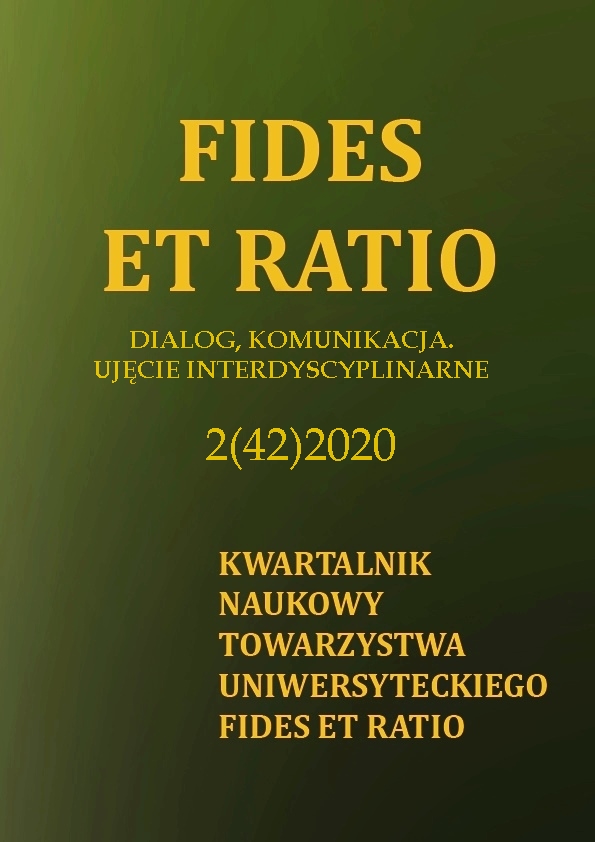Abstract
In this article, the analysis of relationships between experiencing verbal aggression and other types of peer aggression and between verbal aggression and problem behaviors was presented. The data were collected by survey method amongst 1086 adolescents, aged 13-14. Statistically significant relationships were found between verbal aggression and other types of peer aggression and between verbal aggression and problem behaviors.
The strongest correlations were found between experiencing verbal aggression and physical aggression and between experiencing verbal aggression and cyber aggression.
References
• Baron, R. A., Richardson, D. R. (1994). Human aggression, New York: Plenum Press.
• Buss A. H. (1961). The psychology of aggression, New York: Wiley.
• Dominiak-Kochanek, D., Frączek, A., Konopka, K. (2012). Styl wychowania w rodzinie a aprobata agresji w życiu społecznym przez młodych dorosłych, Psychologia Wychowawcza, 1–2, 66–85.
• Frankowiak, J (2018). Cyberagresja wśród adolescentów - skala, charakter, uwarunkowania, Studia z Teorii Wychowania, 9(4), 237-257.
• Infante, D.A., Wigley, C.J. (1986). Verbal aggressivenessi: An interpersonal model and measure, Communication Mono-graphs, 53(1), 61– 69.
• Jessor, R. (1987). Problem-behavior theory, psychosocial development, and adolescent problem drinking, British Journal of Addiction, 82(4), 331–342.
• Jessor, R. (1998). New perspectives on adolescent risk behavior, (w:) R. Jessor (red.), New perspectives on adolescent risk behavior, Cambridge: University Press, 1–9.
• Kenrick, D.T. , Neuberg, S.L. Cialdini, R.B. (2002). Psychologia społeczna, Gdańsk: GWP.
• K m i e c i k - B a r a n , K. (1999). Młodzież i przemoc. Mechanizmy socjologiczno-psychologiczne, Warszawa: PWN.
• Liberska, H., Matuszewska, M., (2007). Rodzinne uwarunkowania zachowań agresywnych młodzieży, Roczniki Socjologii Rodziny, t. XVIII, 187–200.
• Libiszowska-Żółtkowska, M. (2008). Agresja w szkole. Diagnoza i profilaktyka, Warszawa: Difin.
• Narodowy Program Ochrony Zdrowia Psychicznego (2010) Rozporządzenie Rady Ministrów z dnia 28 grudnia 2010 r. w sprawie Narodowego Programu Ochrony Zdrowia Psychicznego, Dziennik Ustaw Nr 24, poz. 128.
• Ostaszewski, K., Rustecka-Krawczyk, A., Wójcik, M., (2011) Czynniki chroniące i czynniki ryzyka związane z zachowaniami problemowymi warszawskich gimnazjalistów: klasy I–III, Warszawa: Instytut Psychiatrii i Neurologii.
• Plopa, M., (2005). Psychologia rodziny, Kraków: Impuls.
• Ramírez, J.M., Andreu, J.M., Fujihara, T., Musazadeh, Z., Saini, S., (2007). Justification of aggression in several Asian and European countries with different religious and cultural background, International Journal of Behavioral Development, 31, 9–15.
• Szewczuk, W. (1985) (red.) Słownik psychologiczny, Warszawa: PWN.
• Vasquez, E.A., Ensari N.,Pedersen, W.C., Tan, R.Y., Miller, N. (2007). Personalization and differentiationas moderators of triggered displaced aggression towards out-group target, European Journal of Psychology, 37, 297–319.
• Wojciszke, B. (2000). Relacje interpersonalne, (w:) J. Strelaua (red.), Psychologia. Podręcznik akademicki, t. 3, Gdańsk: GWP, 147-186.
